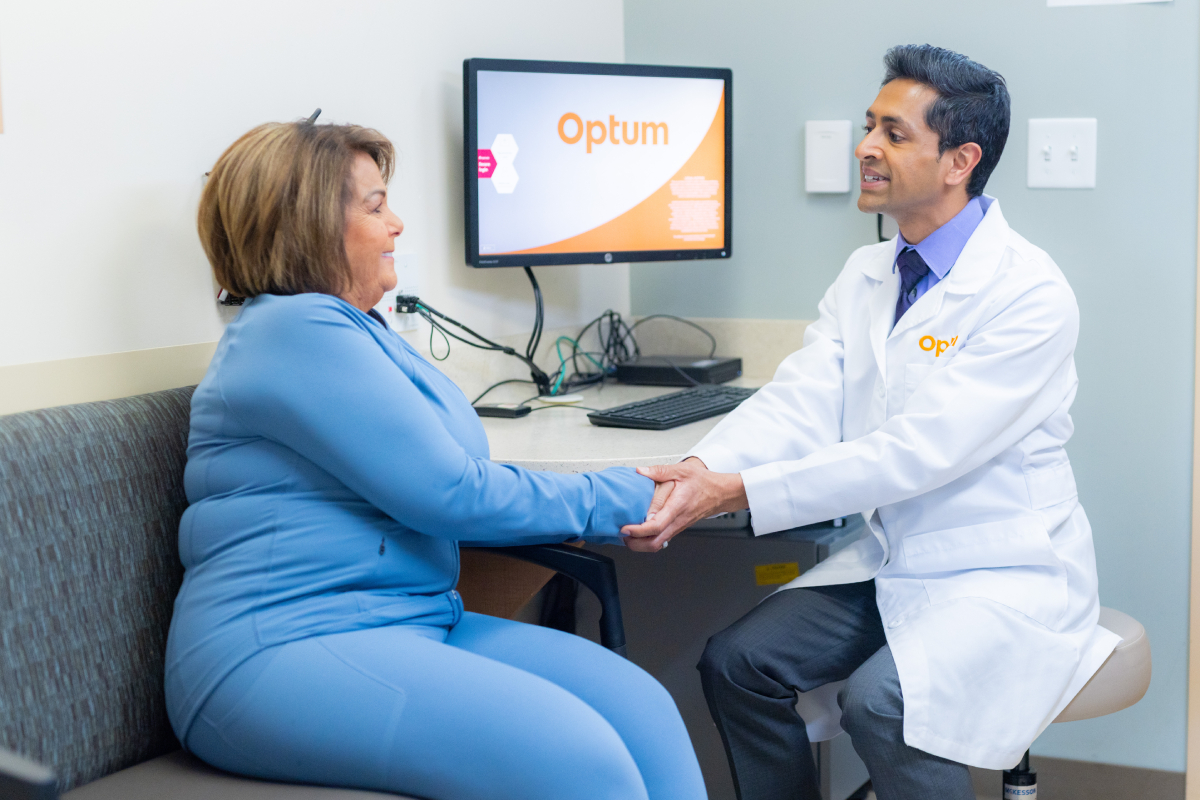
5 medication mistakes to avoid (and smart habits to try)

Improving your prescription habits can go a long way toward boosting your health.
For most people, getting older involves taking medications. In fact, 80% of older adults regularly take two prescription medications, and 36% take five or more.1 And keeping on top of your pills isn’t always easy.
“It can be difficult to take medication the way it’s prescribed and intended,” says Katelyn M. Steele, PharmD. She’s the associate director of clinical pharmacy with Optum in Overland Park, Kansas. “The more medication you add onto your regimen, the more difficult it is to manage.”
It’s important to be smart about your prescription routine. One great place to start? Bring a list of all the medications you’re taking and show the list to your primary care doctor — either at your annual wellness visit or your next visit.2 This is especially useful if you have prescriptions from multiple doctors.
During your annual wellness visit (or any visit), your doctor will look over your list of medications, check for any drug interactions, and give you advice on managing side effects.
Between doctor visits, it’s important to take your pills correctly so that you stay healthy. You can start by avoiding these all-too-common medication mistakes.

Mistake #1: Taking your Rx at the wrong time
With some medications, timing matters. “Your body’s ability to absorb the medication can depend on food,” says Steele. Sometimes, you will need to take a prescription on an empty stomach.3 If you don’t, the medication may not fully absorb into your system. Other times, you might need to take a medicine with a meal.4
If you take two or more medications, you may need to take them at separate times. Otherwise, they may affect how the other drugs work by making them stronger, or weaker.5
So read the prescription label to see if there are instructions on medication timing. You might find it’s best to take something in the morning before breakfast or at night with dinner. If you’re not sure, ask your Optum doctor or pharmacist for advice. They’re always ready to help you.
Mistake #2: Not asking about interactions
Prescription medications can interact with food, over-the-counter drugs, supplements and other prescription meds.6 An interaction is when one medicine affects how another one works.
To learn about interactions, talk to your doctor or pharmacist. For example, you might ask: “Will this prescription interact with the ibuprofen I take for knee pain?” Nobody knows your daily routine as well as you do. If you take an over-the-counter medication regularly, that is something your pharmacist can enter into the system.7 That will allow them to look for potential interactions with future prescriptions too.
When it comes to food, ask your prescribing doctor if there is anything you should be cautious about eating, says Steele. For example, let’s say you take warfarin, a medication that treats blood clots. You should know that large amounts of vitamin K, a nutrient found in leafy greens, may interact with the drug and increase the risk of bleeding.8
Mistake #3: Not remembering if you took a pill
You should never be in doubt about whether you took your medication. That’s why you need a system you can rely on.
Here are a few ideas from Steele to help you keep track:
- Place the pill bottle next to something you use every day. For example, if you have a medication that needs to be taken first thing in the morning, place the bottle next to your coffee pot. Turning on the coffee pot will be your cue to take the medication.
- Use a pill organizer that has a section for each day of the week. By looking at it, you can see exactly which pills you still have to take that day.3
- Create a “taken” and “not taken” side of your desk, kitchen counter or bathroom counter. Once you take a medication, move that bottle to the “taken” side.
Mistake #4: Storing your medications incorrectly
Many people store pill bottles in their bathroom’s medicine cabinet. It may surprise you that this is not the best spot. The bathroom can be a hot, humid environment that degrades medication and makes it less effective over time.9 Keeping pills in the car or on a windowsill can also be a problem.
“Proper storage is important for all medications,” says Steele. She recommends a dry, cool area that isn’t exposed to direct sunlight.9 A kitchen cabinet or linen closet might be a good option. And always be sure to store medication out of reach of curious children.
Looking for more great tips that can help you reach your health goals this year? Sign up for our Optum newsletter today.
Mistake #5: Stopping a medication early
There are many reasons you might consider stopping a medication early. Maybe you don’t like the side effects, or you’ve started feeling better. Maybe the medication itself is unpleasant. This might happen if the pill is large, for instance.
But it’s important that you take the medication as prescribed.3 In some cases, stopping early may pose a problem. This includes withdrawal symptoms and other health risks.10 With antibiotics, stopping early could even increase your risk of developing a treatment-resistant infection.10
If you want to make a change, talk to your doctor. “Make sure you discuss the risks and alternative options prior to stopping a medication,” says Steele.
In some cases, your doctor may advise you how to wean off the medication properly. In others, they may move you to an alternate medication.
The important thing is to reach out to your Optum provider when you’re not certain about something. At Optum, everyone on your clinical team is there to help you. So make sure you’re taking full advantage of their expertise.
Sources
- Merck Manual. Aging and medications. Last updated November 2022. Accessed November 27, 2023.
- Medicare.gov. Yearly “wellness” visits. Accessed November 27, 2023.
- National Institute on Aging. Taking medicines safely as you age. Last reviewed September 22, 2022. Accessed November 27, 2023.
- U.S Food and Drug Administration. As you age: you and your medicines. Last updated February 19, 2019. Accessed November 27, 2023.
- National Library of Medicine. Taking multiple medicines safely. Last updated August 11, 2022. Accessed December 7, 2023.
- National Library of Medicine. Drug reactions. Last updated February 7, 2022. Accessed November 27, 2023.
- Centers for Disease Control and Prevention. Prescription drug monitoring programs (PDMPs). Last reviewed May 19, 2021. Accessed November 27, 2023.
- National Institutes of Health: Office of Dietary Supplements. Vitamin K. Last updated March 29, 2021. Accessed November 27, 2023.
- National Library of Medicine: MedlinePlus. Storing your medicines. Last reviewed January 29, 2022. Accessed November 27, 2023.
- National Library of Medicine: MedlinePlus. When you feel like changing your medicine. Last reviewed August 15, 2022. Accessed November 27, 2023.
© 2024 Optum, Inc. All rights reserved. Do not reproduce, transmit or modify any information or content on this website in any form or by any means without the express written permission of Optum.
The information featured in this site is general in nature. The site provides health information designed to complement your personal health management. It does not provide medical advice or health services and is not meant to replace professional advice or imply coverage of specific clinical services or products. The inclusion of links to other web sites does not imply any endorsement of the material on such websites.
Stock photo. Posed by model.



